It’s been a long, snowy winter for Anchorage. Even for those who can claim to have been born and raised in Alaska. The record snowfall for a winter season in Anchorage is 133 inches – over 11 feet of snow – set in 1955. As of March 15, Anchorage has received 129 inches of snow – only four inches short of the record.
So, what does a record snowfall mean to Anchorage residents? Skiing has been great, and spring skiing will last well into May. Getting around, however, is challenging. Anchorage is better equipped to clear snow from our roadways than probably any other city in the nation, yet this year has taxed our system. Main roads are in great shape, but side streets are another issue; especially after a significant snowstorm. Streets become narrow, sidewalks non-existent, and so much snow is piled up on the sides of the roads that it is hard to see cars entering the intersection from the other direction. Traffic lanes are not defined by the paint stripes, because you can’t see them, but by whoever makes the first tracks through the snow. And, we have to watch out for moose, because they find it easier to walk on plowed roads than to blaze a trail through the woods.
Snow storage facilities are maxed out. We have man-made mountains of snow over 50-feet tall! Many of these snow piles won’t be completely melted until the end of August – just in time for the process to start all over again!
Excessive Snow Loads
For engineers, especially structural engineers, heavy snowfall means frequent calls from building owners wondering how much snow their roofs can safely support, and if their roofs are safe. Their concerns are valid. This season, 14 roofs in the Anchorage area, five in the past two weeks, have collapsed from what appears to be excessive snow. But, a fair question is: have the snow loads truly been excessive?
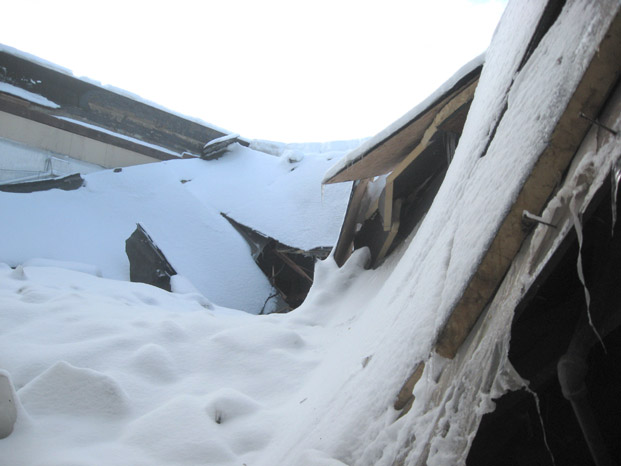 The design roof snow load for Anchorage has been 40 psf for decades. The design snow density of approximately 20 pcf, equivalent to a fairly dense, wet snowpack, means that a roof will be at the design roof load with two feet of snow.
The design roof snow load for Anchorage has been 40 psf for decades. The design snow density of approximately 20 pcf, equivalent to a fairly dense, wet snowpack, means that a roof will be at the design roof load with two feet of snow.
Actual snow density, however, will vary throughout the season. In early winter (November and December), snow tends to be dry and light. As spring approaches (February and March), snow tends to be wetter and heavier. The heavier spring snow compacts the lower snow layers. Simultaneously, heat loss from the building will melt the snow adjacent to the roof and create ice layers under the snowpack. Frozen roof drains can cause thick localized ice build-up around the drains.
Reid Middleton engineers started measuring roof snow loads around Anchorage in January. We found snow depths, except in areas of drifting snow load, to be less than 24 inches and densities in the range of seven to 12 pcf, considerably less than the 20 pcf density used for design. Resulting snow loads were typically 20 psf or less. By March, roof snow loads had increased but were still less than 35 psf on the roofs that we examined. Yet, roofs were collapsing. Why?
Major Causes of Anchorage Roof Failures
From our experience investigating roof failures from this season and previous winters, many of the roof failures occurred at snow loads less than the 40 psf design roof snow load. Failures appear to have occurred because of a number of issues, including:
- Errors in the fabrication or installation of the roof framing members – causing trusses to fail at less than code required loads.
- In wood truss construction, a chord or web member is cut to allow installation of light fixtures or mechanical ducts.
- Ice build-up at frozen drains causes a localized failure of truss members, resulting in a partial or localized collapse of roof framing.
Damaged roof framing members transfer loads to adjacent roof framing members, which become overstressed and fail – transferring loads to other roof framing members. This cascading failure results in an “unzipping” of the roof.
The good news is that, to-date this season, no one has been hurt or injured from the roof failures.
Signs to Watch for Possible Roof Failure
So, what can building owners do when snow builds up on their roofs?
- Watch for signs of excessive roof deflection, such as sprinkler heads protruding below the suspended ceiling or sagging suspended ceilings.
- Look for water leaks in your ceilings – an indication that you may have a clogged or frozen roof drain. Check to make sure that roof drains aren’t frozen – either on the roof or at outlets.
- Listen for creaks or noises indicating that your roof framing is moving.
- Shovel the snow if the depth exceeds two feet or, if in doubt, call a structural engineer to determine the weight of the snow on your roof. It will provide peace of mind not only to you, as the owner, but for your tenants.
I’m tired of shoveling snow from my driveway, but I want four more inches to break the record before Spring Break-Up. And then we get to contend with another issue: what happens when all this snow begins to melt and we are left with the dreaded potholes?

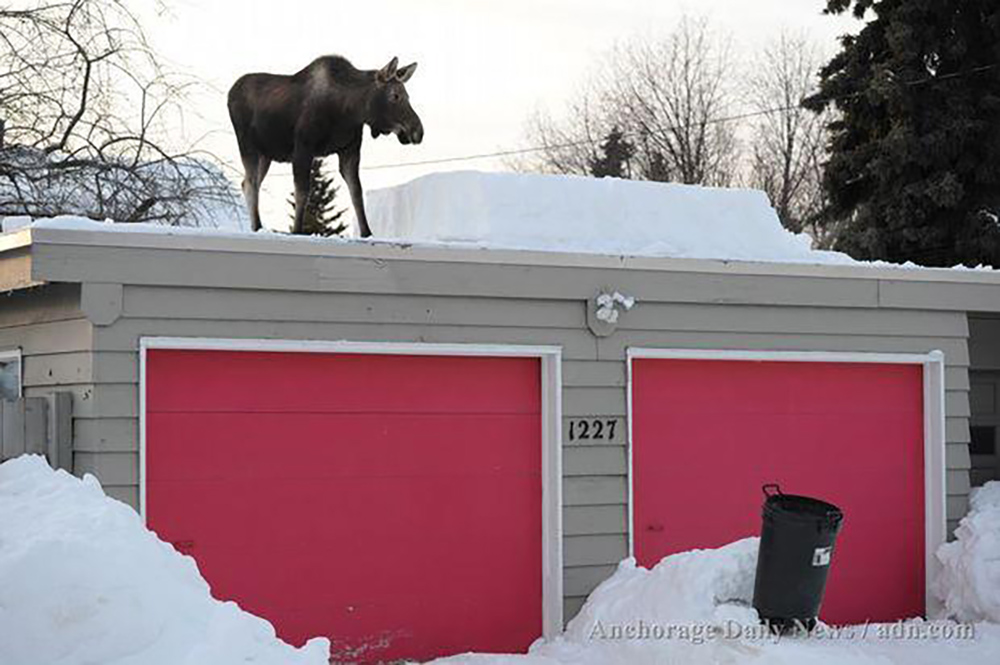
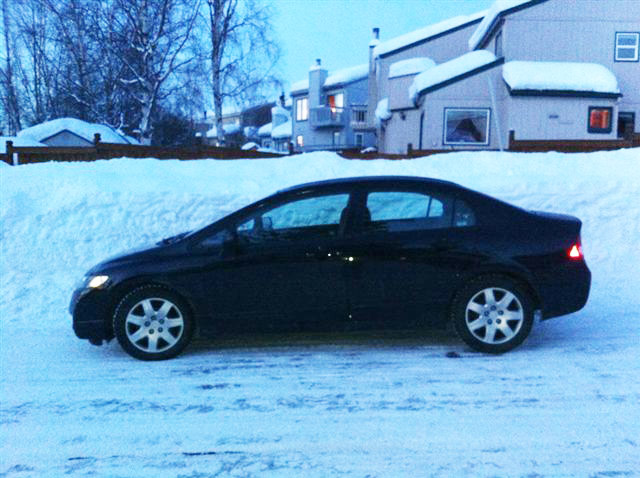
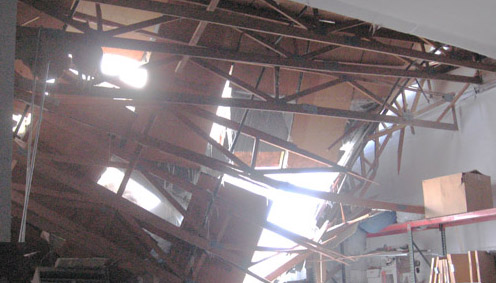
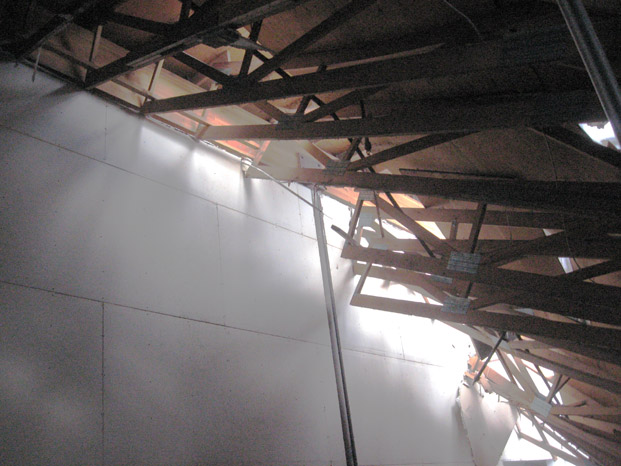

Thank you very much Ken for the very informative article. How much weight would you say is coming down each leg of that moose?
If moose is around 1,000 lbs (fairly close would be my guess), that’s about 250 lbs per leg if equally distributed to all four legs. If the moose rears up, that’s 500 lbs per leg. If you assume a 4″x5″ hoof area, that’s about 12 to 25 psi on the contact area. The snow, of course, will help distribute the load. Bottom line: having the moose punch through the roof of the garage is the least of his worries.
Nice article Ken,
I wasn’t aware of the excessive amount of snow this year in Anchorage. Your recommendations seem well thought out and helpful. What did the total snowfall turn out to be?
Bill
Hi Bill,
As of Saturday, April 7, the snowfall reached 133.6 inches, breaking a 1955 record by exactly one inch.